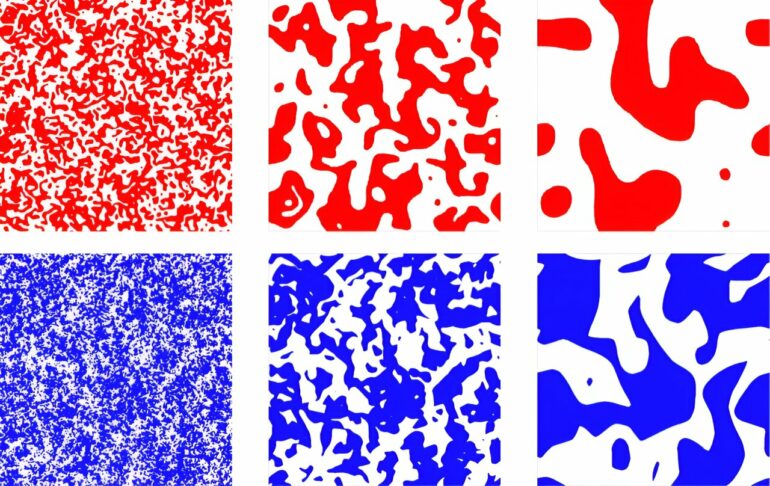Researchers have explored the evolution of systems of interacting spins, as they transition from random to orderly alignments. Through new simulations, they show that this evolution can be investigated by measuring the changing strength of the system’s magnetism.
The Ising model describes systems of interacting atomic spins relaxing from a “paramagnetic” state—whose spins point in random directions, to a “ferromagnetic” state—whose spins spontaneously align with each other. So far, the nonequilibrium dynamics of this transition has been studied by measuring the growth of regions, or “domains” of aligned spins.
In new research published in The European Physical Journal Special Topics, researchers led by Wolfhard Janke at the University of Leipzig, Germany, show how this can be done far more easily by measuring the strength of the system’s magnetization. The team’s discovery could help researchers to better understand the atomic-scale interactions underlying many different phenomena in nature: from electrostatic forces, to neuroscience and economics.
As a system evolves from a paramagnetic to a ferromagnetic state, it is driven to minimize its energy to reach a stable state of thermodynamic equilibrium. This occurs through a reduction in area of domain walls, where the alignment direction of the spins abruptly changes.
In the past, this evolution was typically quantified by directly measuring the growth of a system’s domain sizes over time, which is a technically demanding job. Through their simulations of the Ising model, Janke’s team showed that this can be done just as accurately by measuring the strength of the system’s magnetization, an easily measurable quantity in experiments as well.
According to the researchers, this quantity was largely ignored in previous studies considering that in the thermodynamic limit of infinite systems the magnetization is vanishing. In contrast, the team’s simulations revealed that in finite systems the signature of the growing length scale is encoded in the amplitude of the leading finite-size scaling correction.
This outcome held both for nearest-neighbor interactions between spins, and long-range interactions—which haven’t been widely studied thus far. As a result, Janke and colleagues now hope their new approach could lead to new discoveries in the many areas of nature where long-range spin interactions can be found.
More information:
Wolfhard Janke et al, The role of magnetization in phase-ordering kinetics of the short-range and long-range Ising model, The European Physical Journal Special Topics (2023). DOI: 10.1140/epjs/s11734-023-00882-w
Citation:
Investigating the Ising model with magnetization (2023, July 28)



